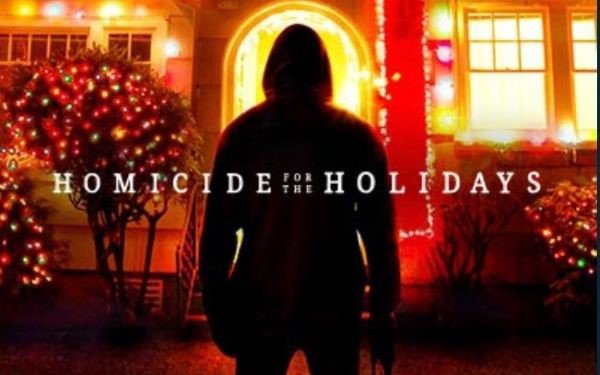Commentary
The State Of TV: 2023-24
- by Adam Buckman , Featured Columnist, December 28, 2023

As 2023 draws to a close, the same issues persist about TV and the role it plays in a society riven by division.
Anger is the national pastime. Discussions over social issues are a take-no-prisoners blood sport.
On TV, the worst of humanity is the central theme. Real-life murder stories -- and scripted ones too -- take up tens of thousands of hours.
Some nights, we graze up and down the cable channels searching in vain for serenity. Would it be so terrible to come across something -- anything -- attractive, civil or peaceful?
Instead, there are the latest aimless murders and assaults on our city’s streets, all the bad news domestic and foreign, and talking heads lecturing the rest of us about all of it.
advertisement
advertisement
And always, the endless array of murder shows. “Homicide For the Holidays,” anyone? ’Tis the season to be melancholy.
In our society today, extreme violence and people having sex -- i.e., porn -- are among our most popular forms of entertainment.
TV -- both streaming and legacy -- has plenty of the former, but as far as I can tell, none of the latter. But follow the money and give it time.
TV is only part of today’s great content ecosystem. Some would say TV does not have the power to influence in the way it once did when it was the king of all media. Advertisers still flock to it, though, which indicates it is not dead yet.
Millions upon millions still watch what we call legacy TV. I interpret the phrase as referring first and foremost to the broadcast networks and their local-station affiliates, and then to the advertiser-supported world of basic cable.
And what a mess that is. As the years go on, the shows on basic cable look cheaper and cheaper and the commercial breaks are longer and longer.
One of the “90 Day Fiancé” spinoffs on TLC has people lounging in bed watching “90 Day Fiancé.” How much does one get paid for laying in bed on TV?
It is a reflection of the way many of us watch TV these days. But if we are watching other people just like us watching TV just like us, what kind of bizarro TV world are we living in today?
TV’s role in exacerbating the fury prevalent today is not debatable (although some might choose to debate it).
Social media having little or nothing to do with TV is a big contributor to the vast arena of anger.
But the cable news channels and their web site counterparts have fanned the flames for years. And it can be argued that the temperature of their fire rises all the time.
These days, it is as if reporting the news on cable without slanting it in one direction or the other is as dead as newsprint.
For example, I look at the CNN and Fox News web sites far more than I watch them. And the phenomenon I discovered this year was the one in which they each present stories with headlines of outrage taken from their own TV talk shows.
It is easy to justify all the vitriole as merely responding to what the audience wants. TV has always reacted that way.
It is the same old chicken-and-egg question. On the subject of the divisions roiling society, our communities and our friendships, which came first? The vitriole itself or the medium that helps to propagate it?




Great column, Adam. For me, I think our current situation is a complex combination of factors that have emerged over the last 75 or so years. That said, I think it began when Civics ceased to be a stand alone subject in school. First it was incorporated into "Social Studies" and then pretty much deleted all together. Just my humble... Happy New Year!
Many very sound points, Adam.
Regarding the influence of what is now dubbed "news commentary", there is no doubt in most of today's viewers' minds which political viewpoint their favorite cable news anchors---or reporters--- favor. Which is why Fox News and, to a lesser extent, MSNBC have far out performed CNN in the Nielsens. Their core viewers agree with the political orientations that these channels project and want to hear more on a daily and, sometimes, an hourly basis. And this is why CNN keps losing the average minute rating wars---even thouggh it is fairly evident where some of its anchors and reporters stand, politically. But they keep pretending that they are just reporting "the news"---which is not all that interesting---and they have failed to bond politically, with many of the viewers who opt, instead, for Fox or MSNBC.
I ran across an old study dating way back to the 1960s or early 1970s which has a bearing on how TV "news" has changed. Then, something like 90-95% of those who watched Walter Cronkite on CBS or the Huntley/Brinkley duo on NBC had no idea what political party these national TV news "stars" favored and this also applied to most of the other on-air news personalities. Yet these powerful figures did have very strong views about their political feelings---except they kept these private and gave no hints to most viewers about where they stood.
So, to answer the obvious question, does TV news "commentary" reflect the feelings of the audience or does it shape these feelings, the answer is probably both. However, in my opinion, it was Fox and later, MSNBC, NewsMax, etc. that fanned the flames.
But there are penalties to be paid. Increasingly "TV News" is being lambasted by poll respondents as being untrustworthy---the negatives, no doubt, being primarily about cable news. However local news, which is at least as large as cable news in terms of times spent, still gets good grades on trustability. Why? Because it mostly stays out of the hateful world of national politics.